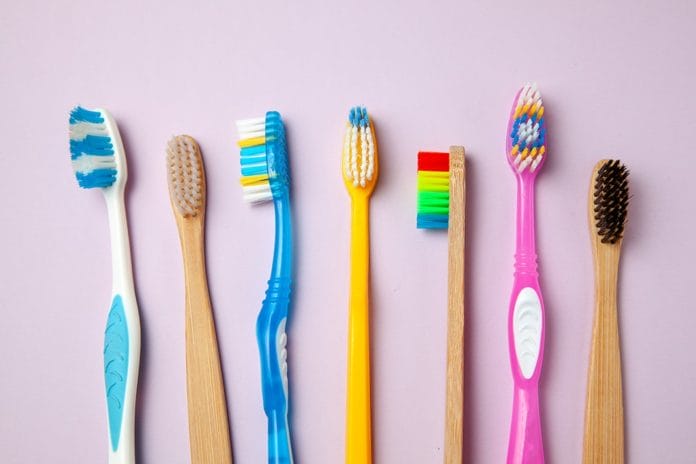Properties Of Manual Toothbrush That Influence On Plaque Removal Of Interproximal Surface In Vitro researched and written by Ryoko Otsuka, Yoshiaki Nomura, et al., investigates twenty-six types of manual toothbrushes to determine what attributes are best to clean between the teeth, or interproximal, to discover what values should all manual toothbrushes have to increase their effectiveness between the teeth.
Dental Caries and Biofilm
Dental caries is an infectious disease that makes itself known with plaque buildup (biofilm). Adequate dental hygiene should consist of a practice that specifically targets biofilm and adequately removes it and the bacteria, bacterial metabolites, and pathogens it carries. Daily biofilm control is essential. As the majority of households clean their teeth with manual toothbrushes, manufacturers should concentrate heavily on making sure that their toothbrushes address this problem. A wide variety of manual toothbrushes exist, but not all are created the same. The researchers wanted to know which toothbrush addressed the biofilm problem the best.
Biofilm more easily collects in between the teeth and most right near where the teeth meet each other, and extra attention should always be paid to these areas. Regular interdental cleaning is essential, and it is a great help, but the process only cleans interproximally and doesn’t really touch the collected plaque in the corners. That becomes the responsibility of the toothbrush. Japan, specifically, has started heavily suggesting floss, toothpicks, and interdental brushes to combat the problem as only 30% of the population currently addresses the issue.
The Study
For the purposes of this study, the use of floss and toothpicks were left out of the procedure so that the toothbrush can be evaluated on its own. All toothbrushes were commercially available in stores and easily accessed by anyone. Each toothbrush was evaluated based on the following:
- Bristle stiffness (soft, semi-soft, medium, and hard)
- Length of bristle
- Head area
- Bristle area
- Number of tufts
- Diameter of bristle
- Form of the brush (dome, flat, and sharp)
- Length and angle of the toothbrush as a whole
Sets of artificial teeth were covered in a replicate type of experimental dental plaque and then secured in a fixed jaw simulation. The teeth were then brushed by a single dentist using each toothbrush. The bristles were set at a ninety-degree angle and used in a horizontal brushing pattern for fifteen seconds on each side of each tooth. The modified brushing technique was used, and the results were calculated by measuring the clean and plaque-free surfaces of each set of teeth in closeup images. Special attention was paid, of course, to the areas between the teeth.
The Value of a Toothbrush
A normal, medium bristle was the most effective strength to remove plaque even though it does cause gingival recession. Small tufts of bristles were also more effective than long ones, and a long handle appeared essential because it was easier to control the pressure a person put on the tooth by the bristles. The results of the experiment made it very clear that brushing alone is not sufficient to contain and eradicate biofilm. Researchers were generally disappointed with each toothbrush as each was very ineffective at its job. They cannot, therefore, recommend any particular toothbrush.
The stiffness of the bristles, the number of tufts, or groups of bristles, available, and their general length contributed to the best interproximal cleanings. The problem is that there was no one toothbrush that contained all the beneficial qualities. These values should be available on all newly manufactured toothbrushes due to their effectiveness. The free toothbrushes handed out by hygienists at preventative appointments should be the best and contain all the positive features available for ultimate dental hygiene; however, it doesn’t seem a toothbrush with these necessary qualities exists.











